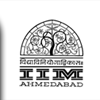|
Modern science through improved sanitation, vaccination, and antibiotics, and medical attention has eliminated the threat of death from most infectious diseases. This means that death from lifestyle diseases like heart disease and cancer are now the primary causes of death. Everybody naturally has to die of something, but lifestyle diseases take people before their time. Too many people are dying relatively young from Heart Disease and Cancer and other lifestyle diseases in modern times.
In India the situation is quite alarming. The disease profile is changing rapidly. The World health Organization (WHO) has identified India as one of the nations that is going to have most of the lifestyle disorders in the near future. Nowadays, not only are lifestyle disorders becoming more common, but they are also affecting younger population. Hence, the population at risk shifts from 40+ to maybe 30+ or even younger. Already considered the diabetes capital of the world, India now appears headed towards gaining another dubious distinction � of becoming the lifestyle-related disease capital as well. A study conducted jointly by the All India Institute of Medical Sciences and Max Hospital shows the incidence of hypertension, obesity and heart disease is increasing at an alarming rate, especially in the young, urban population. According to doctors say, a sedentary lifestyle combined with an increase in the consumption of fatty food and alcohol is to blame cases of obesity, diabetes, hypertension etc.
Lifestyle Disorders in India causing death
Heart Risk - India No.1 in cardiac patients: 10% population affected, US/Europe No. 2: 7% each; China: 4%.
- Heart Diseases to be single greatest 'killer' in India by 2015 (WHO).
- 50 million people in India suffer from heart problems. Number expected to double by 2010.
- Highest growth among young executives: 1 of 8 is under 40 years.
- Heart attacks among executives at 10 years ahead of global average age: Prevention needs to start in early 20s.
- Prevalence of CAD up from 17.5% to 35% among corporate executives in past decade: two-fold rise
- Heart attacks kill one in every 10 Indians
Obesity/ Diabetes - 31 percent of urban Indians are either overweight or obese
- Obesity can, in fact, triple the risk of heart disease.
- India has one of the highest numbers of diabetic patients in the world, as many as 30 million, and growing by the day.
Stress/ Hypertension/Lipids - Hypertension & Stress, especially from work, account for more than 50% of heart ailments
- 100 million people in India have high blood pressure
- Two out of three employees in India are victim of stress
- Over 40% of urban Indians have high lipid levels (cholesterol and triglycerides) that are the major risk factors for heart disease
Source: IOA,2008 Dictionary meaning of Lifestyle disease: A disease associated with the way a person or group of people lives. Lifestyle diseases are diseases that appear to become ever more widespread as countries become more industrialized. These are different from other diseases because they are potentially preventable, and can be lowered with changes in diet, lifestyle, and environment. These include hypertension , heart disease, stroke, obesity ,diabetes, diseases associated with smoking and alcohol and drug abuse, tobacco- and nutrition-induced cancers, chronic bronchitis, emphysema and premature mortality. TOP LIFE STYLE DISEASES
| Name | Comments | | Alzheimer's Disease : a form of brain disease. | No one knows the exact cause, but a real breakdown of the cells of the brain does occur. There is no treatment, but good nutrition may slow the progress of this lifestyle disease. | | Arteriosclerosis : A generic term for several diseases in which the arterial wall becomes thicken and loses elasticity. Atherosclerosis is the most common and serious vascular disease. | Plaques (atheromas) deposited in the walls of arteries are major causes of heart disease, chest pain (angina pectoris), heart attacks, and other disorders of the circulation. Atherosclerosis usually occurs with aging. It is linked to overweight, high blood pressure, and diabetes. | | Cancer : diseases characterized by uncontrolled, abnormal growth of cells. | Cancer is definitely considered the number one Disease of Civilization.
There are more than 150 different kinds of cancer and many different causes. | | Top 5 Cancers | | MEN
1. Prostate (28%)
2. 2. Lung (17%)
3. Colorectal (12%)
4. Bladder (07%)
Non-Hodgkins Lymphoma (04%) | WOMEN
1. Breast (30%)
2. Lung (13%)
3. Colorectal (12%)
4. Uterus (06%)
Ovary (04%) | | Chronic Liver Disease/Cirrhosis : any of a group of liver disorders. | Characteristics of liver disease are jaundice, loss of appetite, liver enlargement, fluid accumulation, and impaired consciousness. | | Chronic Obstructive Pulmonary Disease (COPD): a disease characterized by slowly progressing, irreversible airway obstruction. | The symptoms are problems in breathing while exercising, difficulty in breathing in or out deeply, and sometimes a long-term cough. The condition may result from chronic bronchitis, emphysema, asthma, or chronic bronchiolitis. Cigarette smoking and air pollution make it worse. | | Diabetes : a disease affecting sugars used by the body. | There are four main types of diabetes mellitus. Type I diabetes is also called insulin-dependent diabetes, juvenile-onset diabetes, brittle diabetes, or ketosis-prone diabetes. Type II diabetes is also called non-insulin-dependent diabetes, adult-onset diabetes, ketosis-resistant diabetes, or stable diabetes. Type II often develops in over weight adults. Type III, or gestational diabetes, occurs in some women during pregnancy. Type IV includes other types of diabetes are linked to disease of the pancreas, hormonal changes, side effects of drugs, or genetic defects. | | Heart Disease : any of several abnormalities that affect the heart muscle or the blood vessels of the heart. | Heart disease has been the number one cause of mortality and morbidity.
There are a couple dozen forms of this lifestyle disease. Heart disease and other forms of cardiovascular disease can lead to congestive heart failure, a condition in which the heart cannot pump sufficient blood to meet the demands of the body. | | Nephritis/CRF : any disease of the kidney marked by swelling and abnormal function. | Characteristics of kidney disease are bloody urine, persistent protein in urine, pus in urine, difficult urination, and pain in the back. | | Stroke : a condition due to the lack of oxygen to the brain that may lead to reversible or irreversible paralysis. | Stroke is linked to advanced age, high blood pressure, previous attacks of poor circulation, cigarette smoking, heart disorders, embolism, family history of strokes, use of birth-control pills, diabetes mellitus, lack of exercise, overweight, high cholesterol etc |
It is predicted that globally, deaths from non communicable diseases (NCD) will increase by 77% between 1990 and 2020 and that most of these deaths will occur in the developing regions of the world including India. These conditions not only cause enormous human suffering, they also threat the economies of many countries as they impact on the older and experienced members of the workforce. In India alone, heart ailments, stroke and diabetes are the most demanding ones which are expected to eat away the country's gross national income to a huge extent by the year 2015. Nowadays, worldwide the true picture is, the sedentary lifestyle is more dangerous for our health than smoking. Researchers of University of Hong Kong in a study looked at the level of physical activity in people who died and were able to correlate their level of physical activity with their risk of dying.
The results are fascinating: 20% of all deaths of people 35 and older were attributed to a lack of physical activity. That's more deaths than can be attributed to smoking. Looking at specific diseases, the risk of dying from cancer increased 45% for men and 28% for women due to lack of physical activity. The risk of dying from respiratory ailments was 92% higher for men and 75% higher for women. The risk of dying from heart disease was 52% higher for men and 28% higher for women, all due to a lack of physical activity.
In India, the scenario is quite worse. It is said that, the possibility of an Indian suffering from a lifestyle disease is four per cent greater than people from other nationalities. Changing lifestyle is mainly responsible for an increase in the number of people suffering from hypertension, stress and other heart ailments. Today's 24x7 world order leaves little room for entertainment, social life, exercise and regular eating and sleeping patterns. Time is being converted into money and personal priorities take back seats as corporate interests and personal ambitions take centre stage. Only when our body starts showing signs of fatigue and inability, we look at our daily routine and think how the same impacts our personal lives. Doctors term these diseases as 'affluent society diseases', which are mainly caused due to reduced physical activity and consumption of fast food and alcohol. Since factors like heredity, sex, age cannot be avoided, one must manage one's lifestyle to avoid being at risk of different lifestyle dominated diseases.
In this context, the people suffering from different ailments or those who stays in the risk zone, should have periodic health checkups for early detection of risk factors and diseases. Regular health-checks coupled with lifestyle changes can go a long way in prevention, early detection and cure of diseases. Preventive healthcare involves health promotion, which is aimed at modifying the individual's social circumstance and lifestyle, which can be also termed as Lifestyle Medicine.
Lifestyle Medicine is nothing but the use of lifestyle interventions in the treatment and management of lifestyle diseases. Such interventions include diet rectifications (good nutrition), exercise, stress management, smoking cessation, and a variety of other non-drug modalities. A growing body of scientific evidence has demonstrated that lifestyle intervention is an essential component in the treatment of chronic disease that can be effective when used appropriately with medication.
The emphasis of lifestyle medicine is on:
Assessing lifestyle
Evaluating the risk factors
Evaluating laboratory reports
Discussing the opportunities for interventions
Prescribing an optimal lifestyle
Tracking and follow-ups
Other than lifestyle interventions in various forms, the healthy lifestyle habits that each member of the society should practice are:
- A strict No to - Smoking
- Alcohol
- Illegal Drugs
- Hypertension
- Stress
- Eat Low Fat, Low Salt, High Fiber Diet
- Do Physical Activity etc.
Lifestyle diseases are our own creation. Most men are unable to resist the temptation of cocktail partying, obsession with shopping, workaholism, sedentary living environment, , blind pleasure psychosis, suffocating dispositions, exchanging conscience and faith with wealth, consumption-based happiness indices, absence of regular sleep, leisure, socialising, taking metric kilos of junk food, and finally the mad march against indomitable time. The only remedy lies in the fact that, man needs to control his senses, freshen up his common sense to make life more convenient in the long run.
References:
1. Adams M; Sedentary lifestyle causes more deaths than smoking, says study; Natural news.com
2. Hatfield F. (2004);Exercise and Diabetes; Fitness the Complete Guide
3. Jenkins M. & O'Connell M. (2005); Nutrition: You Really Are What You Eat;The Jump Off
4. Bhatia.C; (2008); We are more prone to lifestyle disorders, a healthy diet is the only solution; Express India
5. Sassi F and Hurst J(2008); The Prevention of Lifestyle-related Chronic Diseases: An Economic Framework; OECD Health Working Paper
6. Stanelli De (2007); Dangers Of A Sedentary Lifestyle- Disease Risks Associated To Physical Inactivity; Suite101.com
7. Lifestyle Diseases-The Natural Health Perspective tm |













